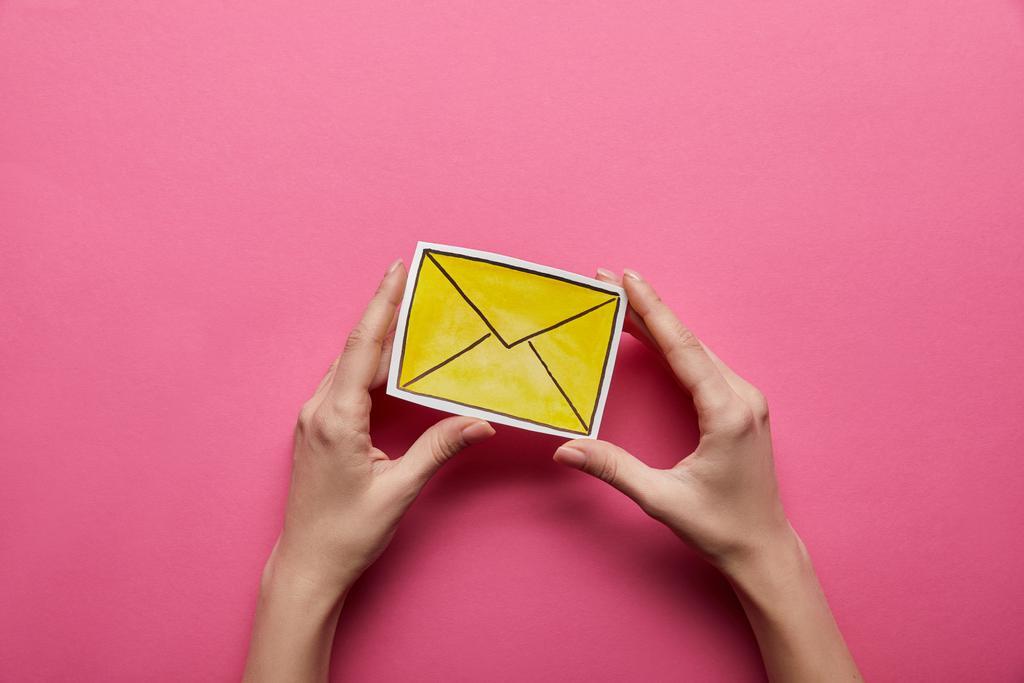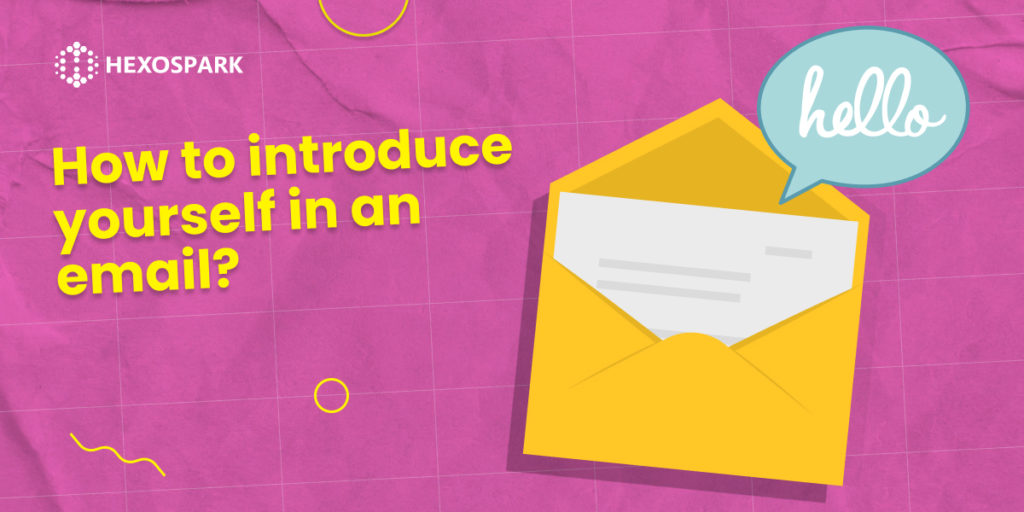Do you want to be the one whose email is opened and replied to?
The only way is to become skilled in representing yourself.
It is the first impression that is lasting. Hence, crafting a relevant and professional introduction in an email is going to determine the efficiency of your further connections with your customers, vendors, colleagues, business partners, etc.
Your email says a lot not only about you but about your business, as well. If you represent your business in the wrong light, it can highly affect the reputation of your brand overall, which can lead to losing sales, income, high-skilled employees, etc.
Crafting an introduction in an email may seem an easy job at first glance, but don’t hurry up to think so.
The first thing to keep in mind is that there is no one-size-fits-all email template that can do magic.
Each email you send is different as you are sending it to a different person or company. It is essential to think from the perspective of your recipients when you craft an introduction email. Being sure that the message you send out accurately reflects the right impression is key.
Moreover, the standards of business writing change over time. What was once considered professional may now seem formal and cold. Keeping an eye on how communications have changed and evolved over time is essential to ensure your introduction email remains up-to-date.
At Hexospark, we constantly keep an eye on how email communication is being changed and evolved and can share a ton of tips and tricks to help you get more responses to your emails introducing yourself in the right light.
Let’s dive in.
The anatomy of introducing yourself

The anatomy of your introductory email is simple, including the following key elements:
🔸 Your subject line
🔸 Your greeting
🔸 The first line of your email body
🔸 The reason for reaching out
🔸 Call to action
🔸 Sign off and Signature
Each of the elements should be well crafted with the appropriate tone of voice and personalization level.
Let’s look into each element in greater detail next.
📩 Your subject line
The subject line is the first thing your recipient is going to see.
Chances are it will be ignored unless it’s truly compelling.
According to OptinMonster, over 30% of recipients open an email because it has an attractive subject line.
Your subject line tells the recipient what’s inside your email. Avoid being deceiving, yet be sure it’s captivating enough to prompt the recipient to open it.
Remember that it is the subject line that will urge the recipient to open the email, ignore it, or in the worst case, mark it as spam.
As spam filters become more complex, gaining approval from the software may be not enough.
Despite this, some words used in subject lines can still have a negative impact on your open rates and should be avoided if possible.
Here are some basic rules to keep in mind when crafting a subject line.
🔸 Don’t write long subject lines. The ideal length of a subject line should be about 30-60 characters.
Hello from ADD COMMON INSTITUTION NAME alumnus.
🔸 Avoid using ALL CAPS or exclamation marks. This makes your subject line sound rude and triggers spam filters. So be cautious. Instead, you can capitalize the subject lines as you would the title.
A Huge Fan Of {{organizationName}} Here.
🔸 Add emojis to your subject line. Most of the recent studies state that using emojis in email subject lines increases their open rate.
😊It was nice seeing you at ADD EVENT NAME.
🔸 Personalize your subject lines. Numerous studies have shown that people are more likely to open an email with a personalization rather than a generic one.
This subject line 👋Hello, Mary will work better than something like this Hi there.
👋 Your greeting
The way you greet the recipient can make a difference. So, always pay attention to who you are approaching.
For formal industries, like government, finance, and law, “Dear” is usually the best choice. But for more non-formal cases, such as tech, media, travel, etc., you could try “Hi,” or “Hello” instead. “Hey” is also considered a common option, but, I would not recommend using this for the first contact as you may not know how the recipient will perceive it.
To demonstrate that you have researched the person or the company you contact, you can search and find the sort of greeting they are familiar with. This will definitely work!
After, the greeting, you can shortly present yourself: who you are, your position, your company, etc.
Hello {{contactFirstName}},
I am {{senderFirstname}}, the ADD YOUR POSITION from ADD YOUR COMPANY.
📧 The first line of your email body
Next, comes the first line of the email body. This part should be all about the recipient.
A key point to keep in mind: rather than emphasizing that you don’t know the recipient, start with something relevant to them. Everyone enjoys discussing themselves, so use this as an opportunity to show that you are interested in them.
Before crafting your email, it is highly recommended to research your recipients’ social media platforms such as Linkedin, Facebook, Twitter, etc. This way you can find their publications, article if any, their points of interest, points of view on different topics, find mutual connections, and more. All this will make a ground for fruitful communication.
Let’s see some first lines that your recipients will love.
🎉 Congratulations on your promotion.
I am {{senderFirstname}}, from ADD YOUR COMPANY
Me and my team loved ❤️ your article on ADD THE TOPIC.
I noticed you manage ADD NAME OF THE PROJECT.
I’m truly inspired by the work you have done on ADD THE NAME OF THE PROJECT.
🗒️ The reason for reaching out
Now that you have the attention of your recipient and have already expressed your admiration, it’s time to make the connection!
The key point here is to express why exactly you are reaching out. Keep your email brief.
Wandering off-topic can lead to a confused recipient.
And, don’t forget that accuracy in grammar and spelling is an absolute must.
Bringing a mutual connection is always a good idea. It can significantly change the way your reader sees you.
Linkedin is the perfect platform for finding mutual connections.
Suppose you’re hoping to arrange a meeting with your potential customer. Just drop a common name in your email and become a “friend of a friend”. This will draw more attention to your email and increase your chances to succeed.
For example,
Our mutual friend Harry told me that you are at dealing with ADD THE PROBLEM. Our company can help you with ADD SPECIFICATIONS.
📢 Call to Action
The final step? It is important to conclude your email in a manner that is appropriate for a professional setting.
Always make sure to include a Call to Action (CTA) in your email.
Make it as easy as possible to fulfill your request; if you’d like to schedule a meeting, include a link to your calendar so they can quickly check both of your availability and reserve a date. If you’d like them to review your post, provide the attachment so they can read it right away.
What is most important here keeping the balance between being polite and confident.
For example,
Would you mind having a 10-15 minute call this week?
Feel free to pick the date/time that works for you best on my calendar: ADD YOUR CALENDAR LINK.
✍️ Sign-off and Signature
Don’t let your email flop at the last moment. Add that magic sign-off and signature to keep the good impression till the end.
Here are some common signoffs you can use:
Best Regards,
Sincerely,
Kind Regards,
Yours sincerely,
Cheers,
Bests,
Next, add your signature. This is your most direct way of showing who you are. Be sure to add your website, email, and other links, and have your image and social media profile link in your email signature. In case you don’t have your favorite signature creator, you can check out our article with the 10 best email signature creators listed.
Some Introduction Email Templates

Finally, find some proven email templates demonstrating how to introduce yourself in an email for various occasions.
Use these templates for inspiration or add your tweaks and personalization to make them meet your individual needs.
1. Self Introduction email to a customer
Subject line:
👋 Greetings from the new ADD YOUR POSITION of ADD YOUR COMPANY
Body:
Hi {{contactFirstName}},
I am {{senderFirstname}}, the new ADD YOUR POSITION at ADD YOUR COMPANY. I have recently joined the team and am reaching out to our most important clients to introduce myself personally.
I would be happy to have a short call with you, to discuss how we can arrange our work most effectively.
Feel free to pick a time that works best for you. Here is my calendar link ADD YOUR CALENDAR LINK
Looking forward to meeting you.
Best regards,
{{signature}}.
2. Self-introduction email to a potential business partner
Subject line:
We can help you with ADD THE PAIN POINT.
Body:
Hello {{contactFirstName}},
I am {{senderFirstname}}, the ADD YOUR POSITION of ADD YOUR COMPANY.
After researching {{organizationName}}, I was happy to find out that you are successfully dealing with ADD THE PROBLEM.
At ADD YOUR COMPANY NAME, we are currently in search of a new partner to provide additional SPECIFY THE SERVICES to our organization.
I would highly appreciate it if you could provide more information about your services and your business.
Are you available for a short call on SUGGEST THE DATE AND THE TIME?
Sincerely,
{{signature}}.
3. Self-introduction email for a new job
Subject line:
An experienced applicant for ADD THE POSITION.
Body:
Dear {{contactFirstName}},
After researching your company, I found out that your fast-growing company that is successfully dealing with ADD WHAT COMPANY DOES for XX is searching for a new ADD THE ROLE.
I am {{senderFirstname}}, a ADD YOUR PROFESSION with XX years of experience.
I am hugely excited about this role and believe my skills and experience can make me an ideal candidate.
Please, find attached my most recent CV along with my cover letter. Don’t hesitate to contact me if you have any questions regarding my application.
Looking forward to hearing from you.
Best regards,
{{signature}}
4. Self-introduction email for offering your services
Subject line:
Loved ❤️ your article on ADD THE TOPIC.
Body:
Hi {{contactFirstName}},
It’s {{senderFirstname}}, the ADD YOUR POSITION at ADD YOUR COMPANY.
I am inspired by the work you are doing at {{organizationName}}. I recently came across your article about {the topic} and was impressed with the tips you share on how to manage ADD THE PAIN POINT.
My company has helped millions of customers to deal with ADD THE SAME PAIN POINT for over 10 years. I believe that we can reach more astonishing results with joint efforts.
If you are interested in collaborating with us, let’s have a short call this week. Here is my calendar link ADD THE LINK.
Looking forward to hearing from you.
Kind Regards,
{{signature}}.
5. Self-introduction email bringing a mutual connection
Subject line:
Our mutual friend ADD THE NAME told me to contact you.
Body:
Hello {{contactFirstName}},
Our mutual friend ADD THE NAME, has recently informed me that you are at dealing with ADD THE PROBLEM for XX months.
I am reaching out to share that our company has been successfully dealing with ADD THE PAIN POINT for over XX years.
Would you mind having a 10-minute call this week to discuss how we can help you?
Feel free to pick the date/time that works for you best on my calendar: ADD YOUR CALENDAR LINK.
Cheers,
{{signature}}.
Final Thoughts
Being able to present yourself in an email is a valuable skill.
It’s important to always explain why you are getting in contact and how you can add value.
Introduce yourself to others with politeness, directness, and brevity – just as you would expect someone to introduce themselves to you.
Follow the tips and templates introduced in this article to approach your recipient’s inbox with confidence right away.

Marketing Specialist | Content Writer
Experienced in SaaS content writing, helps customers to automate time-consuming tasks and solve complex scraping cases with step-by-step tutorials and in depth-articles.
Follow me on Linkedin for more SaaS content



